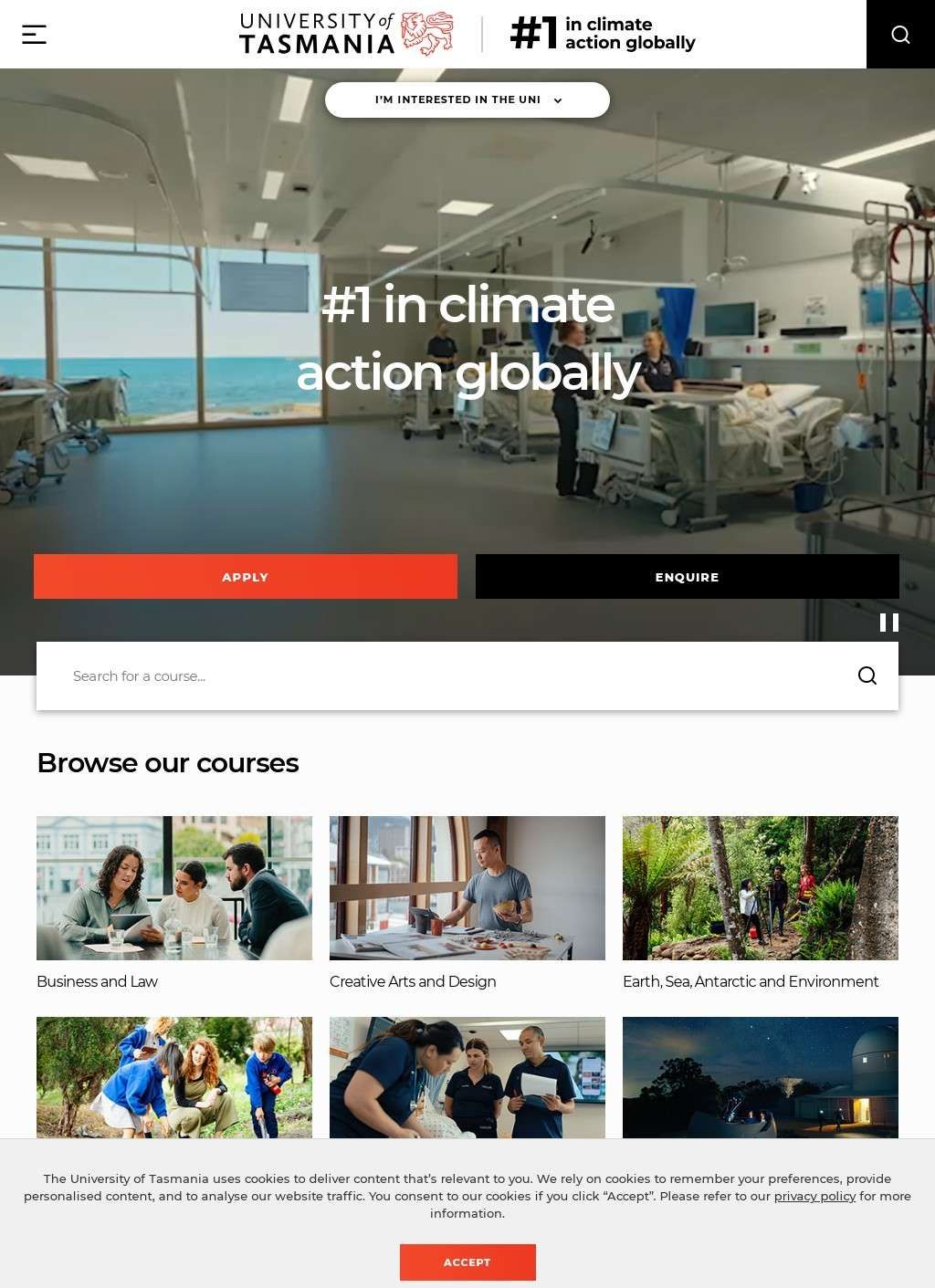The University of Tasmania stands as a unique institution within Australia's higher education landscape, holding the distinction of being both the country's fourth-oldest university and the only comprehensive tertiary institution serving Tasmania's entire population. Founded in 1890, UTAS has evolved from a small colonial college into a globally recognized research university while maintaining intimate connections to its island home that distinguish it from larger mainland institutions. This dual identity - global in research reach but deeply local in community engagement - creates educational opportunities unavailable elsewhere in Australia and attracts students who seek personalized attention within a research-intensive environment.
The university's campus network reflects Tasmania's geography and settlement patterns, with major facilities in Hobart, Launceston, and Burnie complemented by specialized centers including marine research facilities and rural clinical schools. The Sandy Bay campus in Hobart provides the traditional university experience with heritage buildings and modern facilities overlooking the Derwent River, while the newer city-based campuses integrate university activities into Hobart's cultural and business districts. This distributed approach ensures that university resources serve the entire state while creating diverse educational environments for different programs and student preferences.
Research excellence defines UTAS's international reputation, with particular strength in areas where Tasmania's geographic position and natural environment provide unique advantages. The Institute for Marine and Antarctic Studies represents world-leading research in oceanography, climate science, and Antarctic studies, benefiting from Tasmania's proximity to the Southern Ocean and role as a gateway to Antarctica. The Australian Maritime College provides specialized education in maritime engineering, logistics, and marine sciences that serves both national and international needs for skilled maritime professionals.
Sustainability leadership has emerged as a defining characteristic of the university, with UTAS ranking number one globally for climate action in the Times Higher Education Impact Rankings for three consecutive years. This recognition reflects comprehensive approaches to sustainability that integrate research, teaching, operations, and community engagement. The university has achieved carbon neutrality since 2016 and committed to significant emissions reductions, making it an authentic leader in sustainability education and practice rather than just rhetoric.
Student life at UTAS reflects the university's commitment to personalized education within a supportive community environment. With approximately 30,000 students across all campuses and programs, UTAS maintains student-to-staff ratios that enable close mentoring relationships and hands-on learning experiences. The university's size allows for flexibility in program design and individual attention that larger institutions cannot match, while still offering comprehensive academic programs and research opportunities.
Academic programs span traditional university disciplines while emphasizing practical applications and industry connections relevant to Tasmania's economy and geographic position. Environmental science programs benefit from access to pristine wilderness areas and diverse ecosystems, while business programs incorporate perspectives on island economies and Asia-Pacific trade relationships. Education programs train teachers for rural and remote communities, addressing specific challenges like multi-grade classrooms and distance education delivery.
Industry partnerships reflect UTAS's role in Tasmania's economic development, with collaborations spanning traditional sectors like agriculture and forestry to emerging areas like renewable energy and biotechnology. The Tasmanian Institute of Agriculture conducts research and provides education that directly supports the state's agricultural sector, while engineering programs work with local industries on projects ranging from hydroelectric systems to advanced manufacturing. These partnerships often lead directly to employment for graduates while addressing real challenges facing Tasmanian industries.
International connections extend UTAS's influence far beyond Tasmania's shores, with research collaborations particularly strong in the Asia-Pacific region and Antarctic research community. Student exchange programs and international partnerships provide Tasmanian students with global opportunities while bringing international perspectives to campus communities. The university's expertise in island studies, marine science, and climate research proves increasingly relevant to global challenges, positioning UTAS as a significant contributor to international research networks.
Community engagement demonstrates UTAS's understanding of its role as Tasmania's only university, with responsibilities extending beyond traditional higher education to include cultural leadership, policy advice, and community service. Public lectures, cultural events, and community research projects create ongoing connections between university expertise and community needs. The university's museums, galleries, and performance spaces contribute significantly to Tasmania's cultural life while providing practical learning opportunities for students.
Support services recognize the diverse backgrounds and needs of Tasmanian students, many of whom are first-generation university students or come from rural and remote communities. Academic support programs, financial assistance, and accommodation services help students succeed despite potential challenges related to geographic isolation, family circumstances, or academic preparation. Indigenous support through the Riawunna Centre acknowledges and supports Aboriginal students while promoting broader cultural understanding.
The university's transformation initiatives include significant campus developments designed to strengthen community connections and enhance student experiences. The move of some programs from suburban Sandy Bay to Hobart's city center reflects recognition that university activities should be integrated into community life rather than isolated on traditional campuses. These changes aim to increase access for non-traditional students while creating more vibrant learning environments.
Research facilities include specialized infrastructure that takes advantage of Tasmania's unique environment and position, from marine research vessels that access Southern Ocean waters to field stations in pristine wilderness areas. The university's involvement in Antarctic research includes partnerships with national and international programs that position Tasmania as a crucial hub for polar science. These facilities provide undergraduate and postgraduate students with research opportunities typically available only at much larger institutions, creating pathways to academic and research careers that might otherwise require leaving Tasmania.
